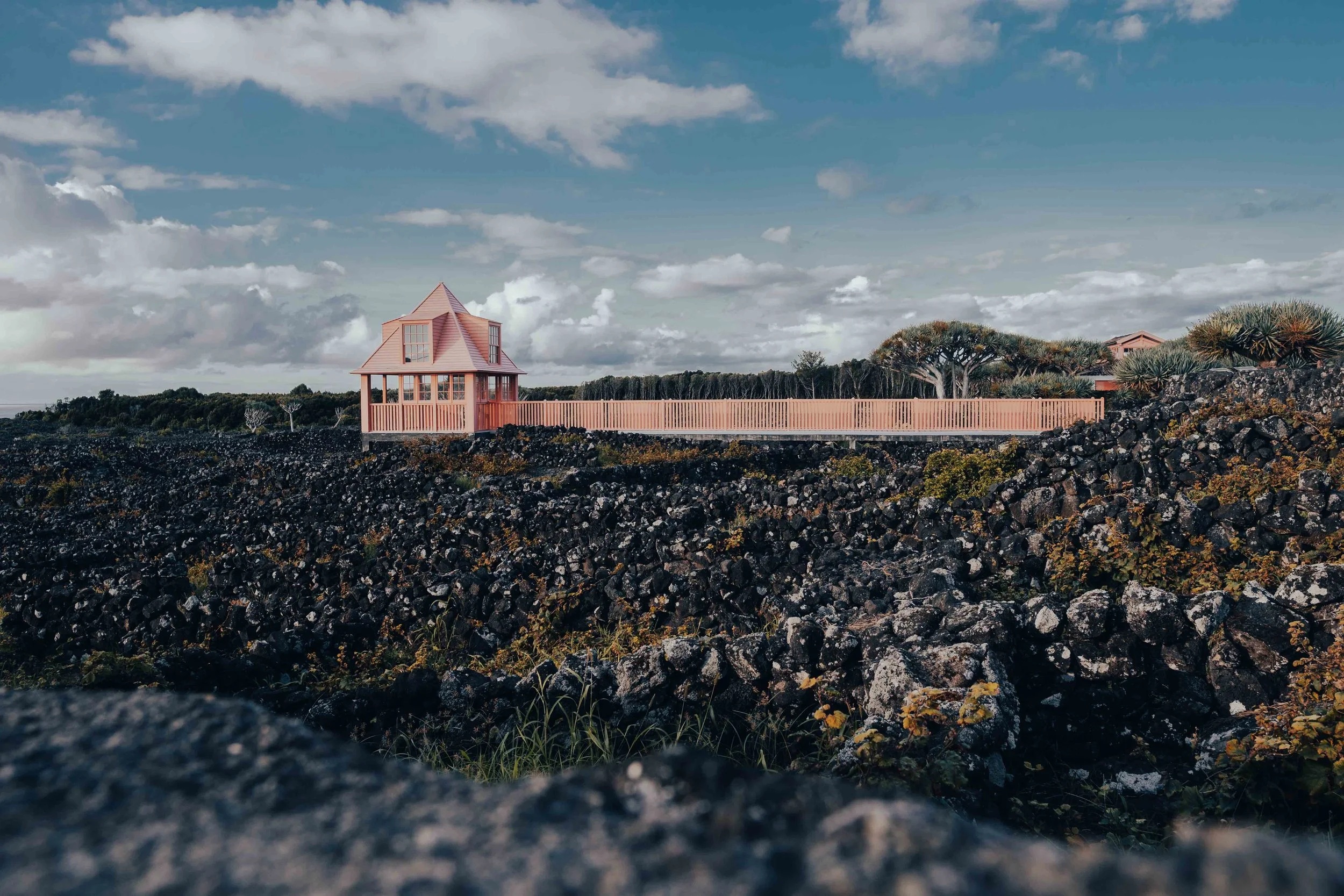My experience diving Pico Island, the Azores
This trip was my most anticipated trip of last year.
I had been thinking about visiting the Azores for quite some time, but I had to postpone due to Covid. Finally, I made it last year, and it is my most memorable trip to date.
Pico Island, located in the Azores archipelago, is a diver's paradise. With crystal clear waters, diverse marine life, and unique geological formations, these islands offer a world-class diving experience.
Pico wine museum
Port of Madalena in Pico
Why the Azores are renowned for diving
The Azores is one of the best places on earth to encounter blue (and mako) sharks in almost perfect conditions.
There are nine islands in total to choose from, each with its own culture and dive spots. For example, Santa Maria is very popular and has ten dive sites in total, with a chance of diving with whale sharks during the summer.
We stayed on Pico, home to the Pico Volcano, which is the highest point in the Azores.
Best time for shark diving in the Azores
The best time to see sharks in the Azores is typically during the warmer months, from June to September. This is also the general diving season for the Azores, even outside of sharks.
Local dive centers cater to this and run their shark adventure trips only during summer. It is also the peak tourist season, so be sure to book your accommodation and dive tours well in advance.
How to get to the Azores
The international airport on Ponta Delgada, São Miguel island, is reachable directly by flights from most European cities. This is the option that I took, flying from Portugal, which took around two hours.
You can also reach the island from Boston or Toronto, which takes roughly 4 to 5 hours on average.
Ilhéu em Pé ("Standing Up" Islet)
Mt Pico in the morning
Best place to stay when diving the Azores
Out of all the dive shops, CW Azores is one of the most reputable companies to dive with on the island of Pico.
I booked their Adventure Package, which includes three shark dives, a day trip to Princess Alice, a whale-watching trip, and a day of swimming with dolphins. They offer different accommodation options as part of the package.
Keep in mind these activities are all weather dependent, and for an island situated in the middle of the North Atlantic, the weather can be quite unpredictable, even during the summer months.
Visitors should be prepared for sudden shifts in weather, ranging from sunny skies to misty rain and occasional bursts of wind or summer storms.
The atmosphere on the island is very chill and laid back, and the island itself is considered very safe - locals don’t even bother locking their cars. The restaurant options on the island are somewhat limited, but a short 30-minute ferry ride to São Jorge would give you more choices and a better view of Mt Pico - of course, under the right weather conditions.
Diving with Blue sharks
Shark dives are concluded here similarly to South Africa or anywhere else in the world. The dives are baited, but the only difference is that guides don’t hand-feed the sharks here. Full wetsuits, hoodies, black fins, and gloves are required.
If you don’t have gloves, don’t worry - you can borrow a pair from the dive center free of charge.
There are many spots around the island and it’s always decided by the dive guide in the morning. All the sites are within a maximum of half an hour by boat.
Mermaid - our dive boat for the week
Our dive guides, Ricardo and Marty, have years and years of experience diving around these waters - make sure to listen to them during the pre-dive briefings. They’ll tell you a ton of useful information about the behavior of these animals, the structure of the dives, and how to position yourself - handy tips for photographers.
Strong currents can be present depending on the weather, so hold on to the rope connected to the boat if you don’t feel comfortable diving in currents. Now that you know all the ins and outs - let’s jump in the water, shall we?
Blue sharks are frequently spotted in waters surrounding the Azores
Diving with blue sharks is one of the most interactive encounters a shark dive can deliver. Blue sharks are true pelagic animals, typically found offshore and in deep-sea environments, often inhabiting waters far from the coast.
Blue sharks are solitary hunters who spend most of their time roaming the open ocean. Imagine when they meet bubble-blowing, vertically floating creatures in their natural habitat - they suddenly become very interested and curious.
If you have a bigger dome port, they will frequently bump into the port, creating opportunities to take advantage of your fish eye lens and snap cool, close-up photos.
Nosy shark bumping into my dome port
Blue shark accompanied with a small pilot fish
Blue shark from above - See Print Here
Most of the action happens no deeper than about 10 meters. If you have a big group of divers, your dive guide will separate the group into two smaller groups and position one group at the front and the other at the end of the boat. Still, it can be difficult to avoid bubbles from fellow divers.
On a single dive, you can have up to 8-10 individuals, typically in the range from 7 to 10 feet (2 to 3 meters) in length. Depending on air consumption, conditions and shark activity, a dive can last up to an hour.
Larger individuals are common in the Azores
Most action happens just below the surface
Blue sharks are particularly vulnerable to overfishing due to their relatively slow reproductive rates. They are often caught incidentally in longline and drift net fisheries targeting other species. Additionally, the demand for shark fins, driven by the shark fin trade, poses a significant threat to blue shark populations!
Princess Alice Bank
Amongst the most popular dive spots of the Azores is Princess Alice Bank, an underwater mountain rising from the ocean floor to a depth of just 35 meters.
Princess Alice Bank is a seamount about 45 nautical miles from Pico Island - a three-hour boat ride in the open ocean. Make sure to pack sea sickness pills if you have a bad history with long boat rides.
Group of mobula rays at Princess Alice Bank
One of the resident mobula rays
Princess Alice Bank is heavily weather-dependent and requires an early morning deployment. The best time to dive at Princess Alice Bank is from July to October when the water is warm and visibility is at its best. During these months, the plankton-rich waters around the bank attract abundant marine life, including mobula rays and whale sharks (if you’re lucky).
A whale shark and my buddy, Anthony at Princess Alice Bank
Princess Alice Bank is most famous for its resident mobula rays, also known as devil rays. These magnificent creatures can grow up to three meters in width and are known for their acrobatic displays, leaping out of the water and performing flips in mid-air.
Princess Alice Bank isn’t an easy shore dive, but the reward is worth the long trip. If it’s not on your dive list yet, it’s time to put it down immediately.
Other diving spots around the Azores
Although Princess Alice Bank is very popular, plenty of other diving locations around the Azores are worth exploring.
Ambrósio, for example, is only 40 minutes away from Santa Maria and is a hotspot for manta rays during the summer months. The island itself is also most frequented by whale sharks if you’re looking to spot them.
For something totally different, you can check out shrimp cave, which is a short boat trip from Faial, which contains large numbers of unicorn shrimp.














